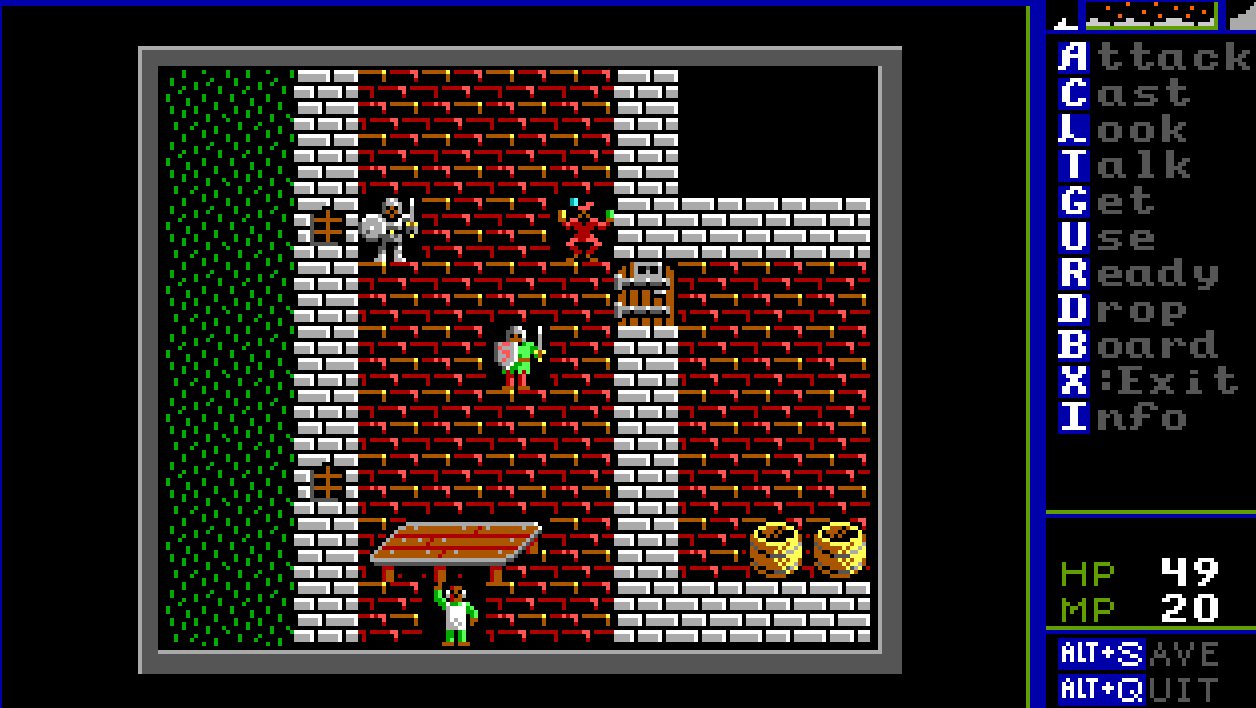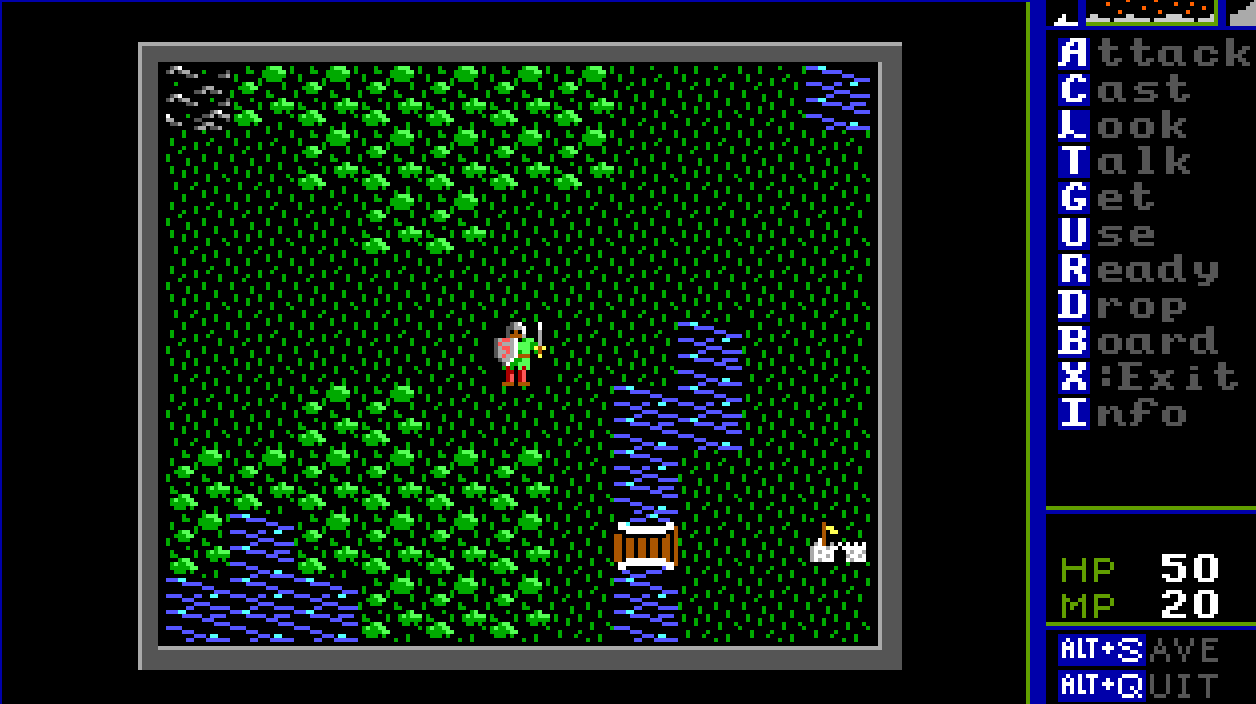I’ve been on a retro-gaming kick lately. Maybe it’s a nostalgic desire for when I was young, carefree, and had plenty of time to explore and ponder Ultima IV, which I revisited almost thirty years later. Another decade passed and in a second wave of nostalgia, I finally plunked down a little money during a sale to play Nox Archaist. I enjoyed it. Well-designed, well-paced, a good main-line quest with multiple interesting but not crucial side-quests, and the designer had streamlined gameplay – cutting out tedious parts and smoothening out flaws.
This year I stumbled upon the CRPG Addict blog and that led me to Antepenult, an obscure shareware game from the 1980s. It has its clever bits but also many flaws, but I still enjoyed it overall. Then the CRPG Addict started playing Enchantasy, another obscure shareware game (by Rick Abel, 1993). I waited until he finished to see his final rating, and I deemed it worth a try. Now that I’ve finished it, I think it’s better than Antepenult. While it shares similiarities to some of the Ultima games, I wouldn’t call it a clone. It had a different feel overall, and I enjoyed most of the game except the last stretch of the mainline quest felt tedious. I completed all the side quests, and the early ones were fun. But at some point, when my party of adventurers got a little too powerful, combat was just tedious. It was a while before I figured out that you could move and attack diagonally, and that you could explore the coasts and rivers with a boat. I would have avoided lots of tedious combat that way and my party would not have levelled up as quickly.
Good parts about the game: The interface was clean and easy to use. Having a map of the world was nice! The graphics were functional and over time I grew to like them better than the Ultima iconography. Early combat was a nail-biter and I enjoyed the early leveling up and skill-training. Conversations were guided and the NPCs emphasize the main point they want to get across. The world felt more interesting even with the generic find-magical-item and defeat evil main storyline. Each town felt unique. There were different grades of potions, weapons, and armor, including some interesting equipment. Monsters leveled up so that combat stayed interesting for a good chunk of the game. There was an interesting system where you had to know the names of some people before they would let you into their house and give you information. I took copious notes in this game, much more than in Antepenult or Nox Archaist. I also enjoyed visiting the Portsmith library!
There were houses off the beaten track, some had murdered people in them so there was a mystery as to who was killing them.
The caves and dungeons were straightforward to map and each had interesting features with secret passages and the like. The side quests were offbeat, and some of them quite amusing. I got to summon a white whale.
There was an abandoned alien base with a lonely robot who got left behind and wanted to be helpful.
Bad parts about the game: The early economy is very, very tight and I’m not sure I would have survived without the slot machines – a very incongruous feature of the game. It felt wrong to essentially rob every house or building I came across early on; I’m not sure if that was the intention. In the last bit of the game there seems to be needless running around from one town to another fetching items to give and receive to progress on your quest. After the excellent buildup in the early stages of the game, this last stretch felt tedious. It wasn’t until the end that I realized how unnecessary many of the side-quests were, even though I found the early ones fun and interesting.
There was a fun little end-sequence after the big boss battle. The game looked set up for a sequel. Like in Antepenult, an evil character gets away and lives to fight another day.
There was a nice celebratory victory where the people of the land congratulated and thanked me for saving them.
At some point, when I’ve forgotten the details I might replay it without the slot machines and using boats early, and perhaps not going through the cabinets and bookcases of the townspeople especially when they’re sleeping in bed and I’m rummaging their house. I went back and read the CRPG Addict’s entries and we did things in different sequences, although he finished the game in roughly half the time. Overall, it’s a good game and I enjoyed maybe a hundred hours of gameplay spread over two months. And the game kept me engaged for most of that time. I call that a win!










